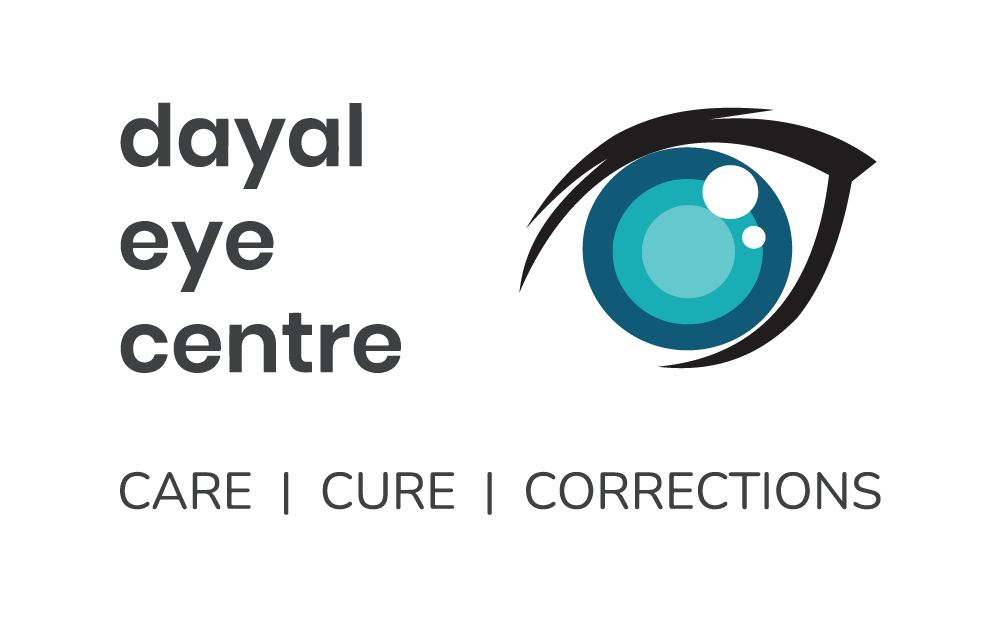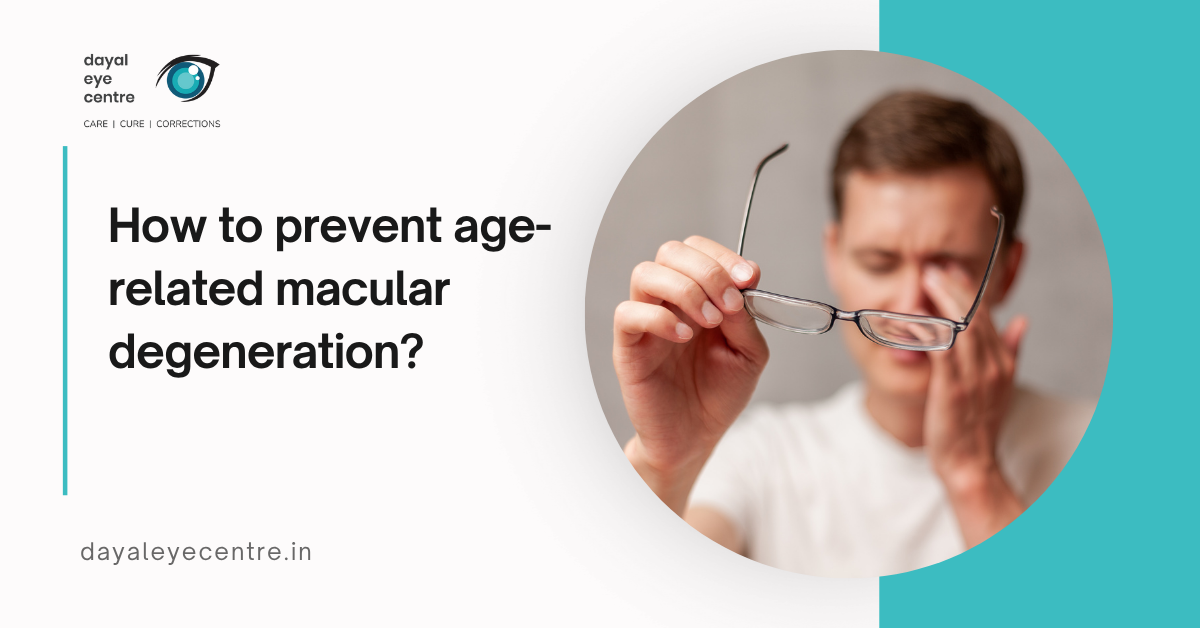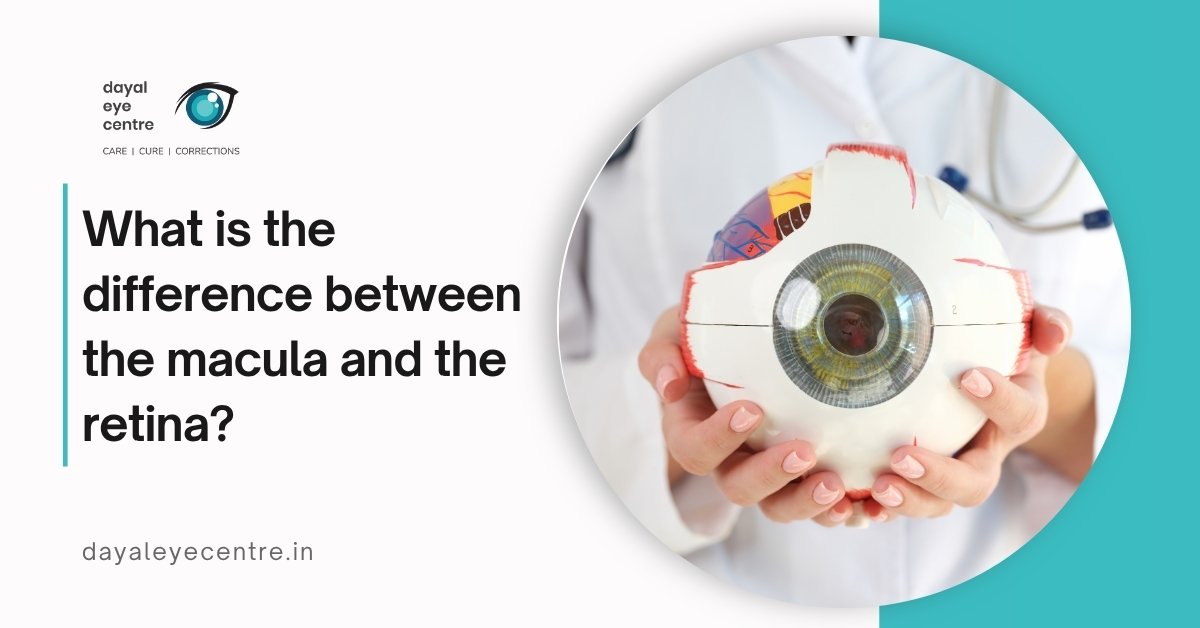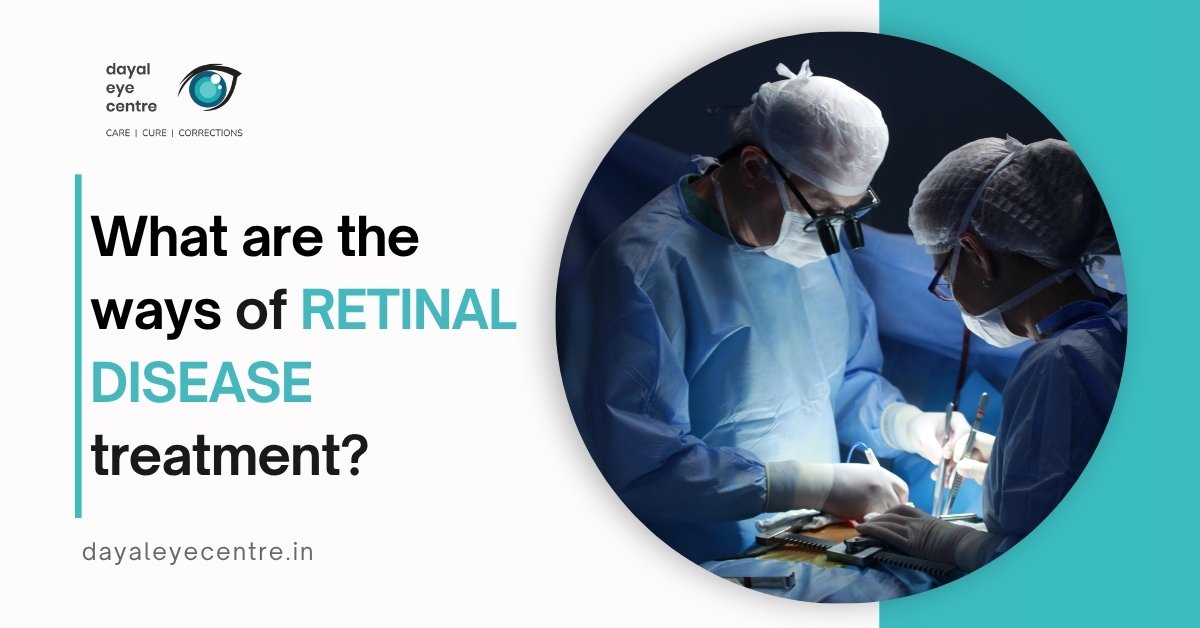Your retina serves as a direct extension of your central nervous system. Doctors value the retina because it’s the only part of your brain they can examine without surgery or invasive tests. Located at the back of your eyeball, this thin tissue layer (only about 0.5mm thick) forms the innermost boundary of your eye, sitting between the vascular choroid and the tough fibrous sclera.
Think of your retina as a biological converter. When light enters your eye, this specialized layer captures light particles (photons) and changes them into electrical and chemical signals. These signals travel through nerve pathways to your brain, which interprets them as the visual world you experience every day.
The retina structure contains approximately 6 million cone cells and more than 100 million rod cells. Each type has a specific job in your vision:
- Rod cells – Work better in dim light and mostly sit in the outer areas of your retina, helping you see in low-light situations
- Cone cells – Function best in daylight and detect colors, with three different types capturing blue, green, and red wavelengths
Your retina divides into ten distinct layers, each playing a vital role in processing vision. Among these, the macula deserves special attention. This yellowish area represents the most sensitive region of your retina, providing your sharpest vision. Within the macula lies the fovea, where cone cells concentrate to give you the detailed central vision needed for reading, recognizing faces, and performing precise tasks.
The retina’s oxygen needs highlight its importance – it consumes oxygen faster than any other tissue in your body. To support this extraordinary energy requirement, your eye developed a unique dual blood supply system that efficiently divides the retina into outer and inner layers for optimal oxygen delivery.
The retinal pigment epithelium (RPE), the outermost layer of the retina, contributes to the critical blood-retinal barrier along with the lining of retinal blood vessels. This layer performs multiple vital functions including moving ions and water while producing essential growth factors and signaling molecules.
Like any other procedure in the body, damage to the retina can have serious consequences. Many retinal diseases severely affect vision and quality of life. Understanding retina function helps explain why conditions like macular degeneration or retinal detachment need immediate medical attention – when damaged, the retina cannot properly send visual information to your brain, potentially causing permanent blindness.
Your retina begins developing in the fourth week of pregnancy and continues growing through the first year of life. This extended development period unfortunately makes the retina vulnerable to both genetic and environmental factors that can negatively impact its formation.
How the Retina Processes Light into Vision
Your vision begins with a remarkable process inside your eye. When light enters, it passes through your cornea and lens before reaching special light-sensing cells in your retina layers. This journey marks the first step in turning light into the world you see.
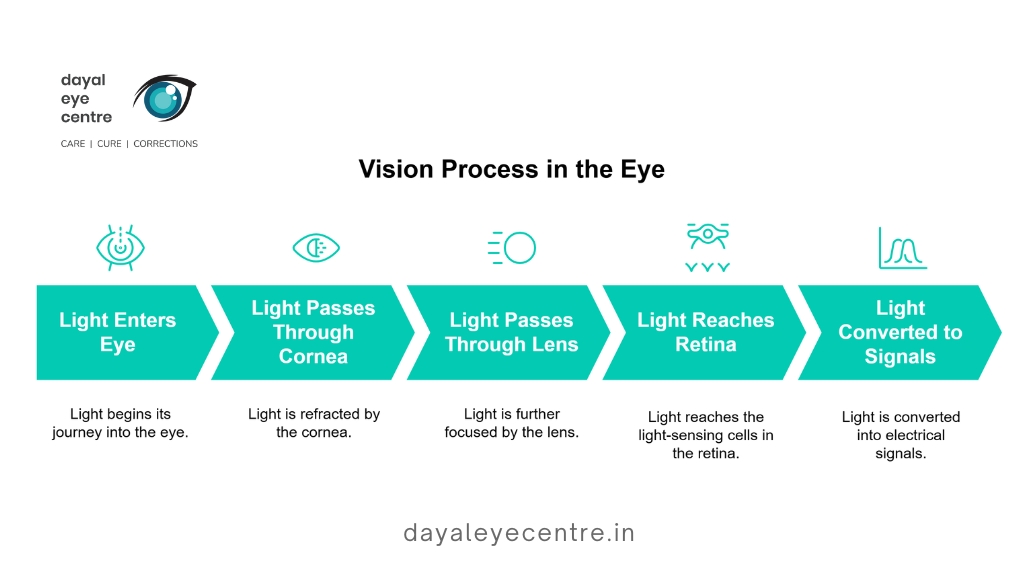
Photoreceptor Role in Light Detection
Photoreceptors work as light detectors in your retina structure. These special cells contain light-sensitive proteins that catch light particles and start the seeing process. Your eye has two main types of these detectors:
- Rod cells – These highly sensitive cells help you see in dim light and make up most of your peripheral vision. Rods outnumber cones by about 20:1 throughout most of your retina.
- Cone cells – Found mainly in the central retina, these work best in bright light and give you color vision and fine details.
Unlike regular nerve cells that activate when stimulated, photoreceptors work differently—they stay active in darkness and become less active when exposed to light. This unusual response happens through a complex chain reaction called phototransduction.
During this process, light changes the structure of light-sensitive proteins in your photoreceptors. In rods, when light hits the protein rhodopsin, it changes from one form to another. This change triggers a series of events involving specific proteins that ultimately signal the presence of light.
Signal Transmission to the Brain via Optic Nerve
After photoreceptors detect light, your retina processes this information before sending it to your brain. First, signals move from photoreceptors to bipolar cells, with other cells modifying these signals along the way.
The processed visual information reaches retinal ganglion cells—the only retinal cells that generate electrical impulses. Their long fibers come together at the optic disk to form the optic nerve that carries visual signals to your brain. Though your retina contains more than 130 million photoreceptors, the optic nerve has only about 1.2 million fibers, showing how much your retina compresses information.
At the optic chiasm, an important crossing occurs—fibers from the inner half of each retina cross to the opposite side, while outer fibers stay uncrossed. Then visual information travels through specific brain regions before reaching your visual cortex, where conscious seeing begins.
Function of Retina in Human Eye: Color, Detail, and Motion
Your retina performs several sophisticated visual tasks:
For color vision, your retina uses three different cone types, each sensitive to different light colors—red, green, and blue. When you look at a yellow lemon, both red and green cones activate together. Your brain interprets this combined pattern as yellow.
Detail vision depends heavily on the central part of your retina, especially the fovea with its densely packed cone cells. Despite covering only 0.01% of your visual field, about 10% of optic nerve fibers serve this tiny area, showing its importance for sharp vision.
For motion detection, special circuits in your retina work together. Scientists found specific connections that help your eyes detect movement, confirming that motion processing starts right in the retina rather than just in the brain. These circuits analyze timing differences between light at nearby retinal locations, letting you see moving objects effectively.
Like any other part of your body, your retina performs complex tasks through these integrated processes, turning simple light energy into the rich visual experience you rely on every day.
Anatomy of the Retina: Layers and Regions
Your eye contains a remarkable structure between the vitreous humor and choroid – your retina features ten separate layers arranged in perfect order. This thin tissue, just 0.5mm thick, lines the back of your eye and works as the critical area where light changes into neural signals.
Macula vs Peripheral Retina
The macula lutea, a yellowish area located to the side of the optic disk, serves as the most sensitive part of your retina. This 5.5mm zone gets its yellow color from natural compounds called lutein and zeaxanthin that help protect against inflammation and filter harmful blue light. At the macula’s center sits the fovea – a small depression packed with cone cells that gives you your sharpest vision.
Your peripheral retina works differently, providing side vision and helping you see at night. This area contains many more rod cells than cones, making it better for detecting movement and working in dim light rather than seeing fine details.
Retina Layers: From Inner Limiting Membrane to RPE
From inside to outside, your retina’s ten layers form an organized structure:
- Inner Limiting Membrane – Creates a smooth boundary next to the vitreous humor, made from Müller cell extensions
- Nerve Fiber Layer – Contains the axons of ganglion cells that eventually form your optic nerve
- Ganglion Cell Layer – Houses the cell bodies of ganglion cells that send axons toward the optic nerve
- Inner Plexiform Layer – Contains connections between bipolar cells and ganglion cells
- Inner Nuclear Layer – Holds cell bodies of bipolar, horizontal, and amacrine cells
- Outer Plexiform Layer – Contains connections between photoreceptors and inner nuclear layer cells
- Outer Nuclear Layer – Contains cell bodies of rods and cones
- External Limiting Membrane – Separates photoreceptor cell bodies from their segments
- Photoreceptor Layer – Contains inner and outer segments of rods and cones
- Retinal Pigment Epithelium – The outermost layer supporting photoreceptors
Gross Anatomy of Retina with Diagram Reference
Your retina extends from the optic disk to the ora serrata, where it meets the ciliary body. Looking at measurements, the distance from the optic disk to the ora serrata spans 23-24mm on the temporal side and about 18.5mm on the nasal side.
Anatomy of Peripheral Retina vs Central Retina
Your central retina appears much thicker than peripheral areas because it contains more densely packed photoreceptors, especially cones. The central retina has mostly cones while your peripheral retina contains mostly rods.
A key difference shows up in the central retina where cone cells have slanted axons forming the Henle fiber layer, which doesn’t exist in peripheral retina. Similarly, the inner nuclear layer appears thicker in the central area, containing more neurons connected to cones and smaller horizontal cells.
Overall, the inner plexiform, ganglion cell, and nerve fiber layers show remarkable differences in thickness – all significantly thicker in central retina compared to peripheral areas.
Common Retinal Conditions and Their Symptoms
Retinal diseases affect millions of people worldwide. Diabetic retinopathy, age-related macular degeneration, and retinal vein occlusion rank as the three most common conditions. These problems can seriously impact your daily life by changing how you see both in the center and sides of your vision.
Age-Related Macular Degeneration
AMD slowly damages your macula—the central part of your retina that gives you sharp, detailed vision. Early warning signs include blurry central vision and seeing straight lines as wavy. As the condition worsens, colors may look less bright, and you might have trouble seeing in dim lighting. While AMD doesn’t cause total blindness, it mainly affects your central vision while your side vision usually stays intact.
Diabetic Retinopathy and Hypertensive Retinopathy
Diabetic retinopathy happens when high blood sugar harms the blood vessels in your retina. You might not notice any symptoms at first, as problems often develop silently until the condition advances. During early stages, tiny blood vessels leak fluid into your retina. Later, abnormal new vessels grow and may bleed into the gel-like substance filling your eye.
Similarly, hypertensive retinopathy develops when high blood pressure damages retinal blood vessels. Studies show that 66.3% of patients with high blood pressure develop this condition. Your risk increases if you smoke, have African-Caribbean heritage, or have had high blood pressure for many years.
Retinal Detachment and Retinal Tears
Retinal detachment occurs when your retina pulls away from the supporting tissues behind it. This serious condition often starts with a retinal tear, which can happen when the gel inside your eye (vitreous) pulls on the retina. You face higher risk if you’re older, very nearsighted, have had eye surgery, or have family members who’ve experienced this problem.
Symptoms: Floaters, Flashes, and Vision Loss
Watch for these warning signs across different retinal conditions:
- Floaters – Dark spots or squiggly lines suddenly appearing in your vision; especially concerning when many appear at once
- Flashes – Light flashes that look like lightning streaks or “stars”
- Vision Changes – Including darkening side vision, shadows across your field of view, and blurred vision
Take comfort knowing that many retinal conditions respond well to treatment when caught early. However, sudden floaters with flashes or a “curtain” across your vision requires immediate medical attention—this could indicate retinal detachment, a true eye emergency.
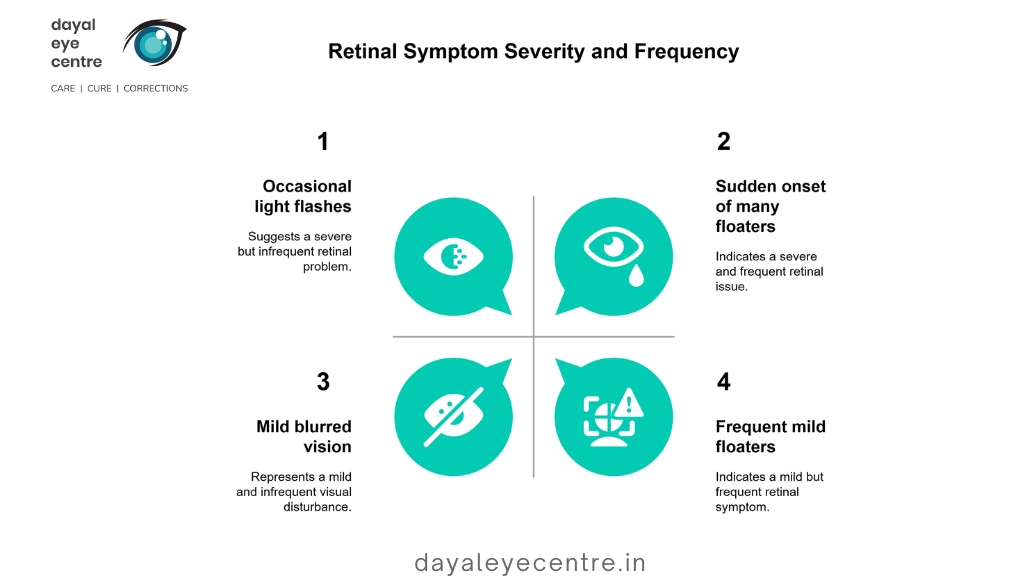
How to Protect and Care for Your Retina
Your retina needs regular care to stay healthy, yet many people forget this important part of eye health. Regular check-ups help maintain this complex tissue that allows you to see the world around you.
Eye Exam Frequency Based on Risk Factors
If you’re between 18-39 years old, you should have complete eye exams every 2-4 years. Those 40-64 years old need exams every 2 years, while people 65 and older should visit yearly. However, some factors mean you’ll need more frequent check-ups:
- Family history of eye disease (especially retinoblastoma or macular degeneration)
- Diabetes or high blood pressure
- Previous eye surgery or injury
- Severe nearsightedness (high myopia)
- African American or Hispanic heritage
Remember, regular vision tests at school or work don’t examine your retina thoroughly. Only a dilated eye exam allows your doctor to see all ten layers of your retina properly.
UV Protection and Eye Safety Measures
The sun’s rays can damage your delicate retina over time. Too much UV exposure helps cause problems like macular degeneration. To protect your eyes:
- Wear sunglasses that block 100% of both UVA and UVB rays
- Choose larger frames or wrap-around styles for better coverage
- Add a wide-brimmed hat, especially between 10am-4pm when sun is strongest
Nutrition and Lifestyle for Retinal Health
What you eat directly affects your retina’s health. Foods that support your retina include:
- Dark leafy greens containing lutein and zeaxanthin
- Fatty fish rich in omega-3 acids
- Colorful fruits and vegetables packed with antioxidants
If you smoke, quitting helps reduce your risk for diabetic retinopathy and macular degeneration. Like any other tissue in the body, your retina benefits from overall good health habits. For diabetic patients, controlling blood sugar levels helps protect retina structure and function.
When to See an Eye Specialist
Talk with your eye doctor immediately if you notice:
- Sudden appearance of floaters or flashes of light
- Dark spots or curtains moving across your vision
- Quick loss of side vision
- Straight lines suddenly appearing wavy
Getting help early often prevents permanent damage to your retina. Most serious retinal conditions worsen if left untreated, potentially leading to vision loss that cannot be reversed.
Conclusion
Your retina serves as an incredible window to your health. Though only half a millimeter thick, this remarkable tissue turns light into the colorful, detailed world you see every day. The retina connects you directly to your brain health, giving doctors a unique view into your central nervous system without invasive procedures.
Like any camera lens that needs proper care, your eyes—especially the retina—require attention and protection. The complex structure of your retina, with its ten distinct layers and millions of specialized cells, helps you navigate daily life. The macula and fovea give you the sharp central vision needed for reading, recognizing faces, and performing detailed tasks.
Taking care of your retinal health means being proactive. Regular eye exams matter most, especially if you have risk factors like diabetes, high blood pressure, or a family history of eye disease. Wearing UV-protective sunglasses, eating foods rich in lutein and omega-3 fatty acids, and watching for warning signs all help preserve your sight for years to come.
Pay attention to symptoms like floaters, flashes, or vision changes. These could signal serious conditions like macular degeneration, diabetic retinopathy, or retinal detachment. Since the retina cannot heal itself once damaged, quick treatment often makes the difference between maintaining sight and permanent vision loss.
While treatments for retinal conditions have improved, prevention remains your best approach. Controlling blood sugar, managing blood pressure, and maintaining good nutrition directly benefit your retina health. Your eyes deserve this care—they connect you to the visual world in ways that enhance every aspect of your life.
Talk with your eye doctor about your specific situation and risks. With proper attention and regular monitoring, you can protect this vital part of your eye health for years to come.
FAQs
What is the main function of the retina in the human eye?
The retina’s primary function is to convert light into neural signals. It captures incoming light and transforms it into electrical and chemical signals that are then sent to the brain via the optic nerve, allowing us to perceive the visual world around us.
What is the main function of the retina in the human eye?
The retina’s primary function is to convert light into neural signals. It captures incoming light and transforms it into electrical and chemical signals that are then sent to the brain via the optic nerve, allowing us to perceive the visual world around us.
How many layers does the retina have and what are they?
The retina consists of ten distinct layers, each playing a specific role in visual processing. These layers range from the innermost Inner Limiting Membrane to the outermost Retinal Pigment Epithelium, with specialized layers for photoreceptors, neural connections, and signal transmission in between.
What are the common symptoms of retinal problems?
Common symptoms of retinal issues include sudden appearance of floaters (dark spots or squiggly lines in vision), flashes of light, blurred or distorted vision, darkening of peripheral vision, and in some cases, a curtain-like shadow across the field of vision.
How often should I get my eyes examined for retinal health?
The frequency of eye exams depends on age and risk factors. Generally, adults aged 18-39 should have an exam every 2-4 years, those 40-64 every 2 years, and individuals 65 and older annually. However, people with risk factors like diabetes or a family history of eye disease may need more frequent check-ups.
What lifestyle changes can help protect retinal health?
To protect your retina, wear UV-blocking sunglasses, maintain a diet rich in dark leafy greens and fatty fish, quit smoking, manage conditions like diabetes and hypertension, and seek immediate care for sudden vision changes. Regular exercise and maintaining a healthy weight also contribute to overall eye health.
